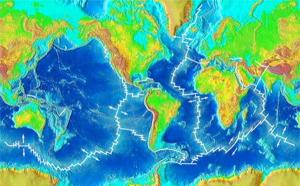The sea covers much of the Earth’s surface, including the world’s longest mountain range and the ancient bridges that mankind used to travel across the continents .
Reconstructing a video from NASA from 2008, planetary scientist James O’Donoghue shows us what the Earth would look like if that amount of water was lost and the rest of the planet was revealed.
O’Donoghue is currently working at JAXA, a Japanese space agency, and previously worked at NASA. He edited the video created by physicist and animator Horace Mitchell in 2008. He slowed down the video speed and added an indicator of how much water was drained during the duration of the video. .
Here is the slow down video:
After the sea water was withdrawn, the first part of the underground land exposed was the continental shelves – the subterranean boundary of the continents.
“I slowed down the first segment because, quite surprisingly, there was a lot of undersea scenery revealed in just the first ten meters,” said O’Donoghue.
Continental shelves include the bridges that ancient humans used to migrate from continent to continent. A few thousand years ago, our ancestors could have moved from Europe to Great Britain, from Russia to America, and from Australia to the surrounding islands.
“When the last ice age happened, a lot of sea water was trapped in the ice, similar to the large ice sheets at the poles. That’s why continental bridges exist,” O’Donoghue said. “Each of these bridges allowed humans to migrate, and when the ice age passed, seawater filled these paths.”
By removing that amount of water, the video gives us a glimpse into the ancient world of human ancestors.

Once the animation has receded more than 6,000 meters, most of the seawater is gone.
At the same time it also indicates the longest mountain range of the Earth, which appeared after the sea level dropped from 2,000 to 3,000 meters. It is a mountain range in the middle of the ocean, more than 60,000km long and spread across the globe. More than 90% of its parts are under the sea.
Volcanoes rise at seams, where the Earth’s tectonic plates are spaced just a few centimeters apart, creating new ocean floors as molten rock emerges from beneath the vegetation.
Once the animation has receded more than 6,000 meters, most of the seawater is gone. But it would take another 5,000 meters to drain the deepest pool of the Mariana Trench.
“I love that the animation reveals that the ocean floor is as rich and interesting as the continents,” said O’Donoghue.
He added that sea water draining not only uncovers “the bottom of the ocean, but also ancient human history” .

